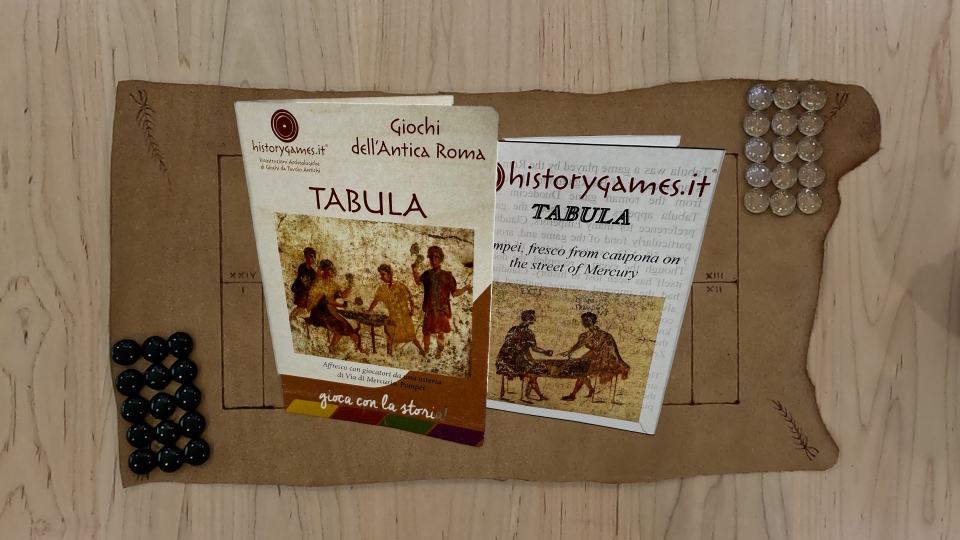Tabula
An ancient Greco-Roman game and predecessor to Backgammon, Tabula was played by emperors, soldiers and commoners alike! Join us as we walk through the rules established more than 1500 years ago, offer some basic strategy and give Tabula our review.
While there are no special pieces and the game can be constructed from common materials like paper and coins, we purchased a game set from historygames.it. This company is led by Monica Silvestri, an archaeologist living in Italy who specializes in ancient games. All of the components are hand made by Gualtiero Tumolo from natural materials like leather, wood and glass.
historygames.it (External Link)Players take turns rolling three dice and moving pieces into play and around the board in a counter-clockwise fashion. The board is a series of 24 rectangles numbered from 1 (bottom-left) to 24 (top-left).
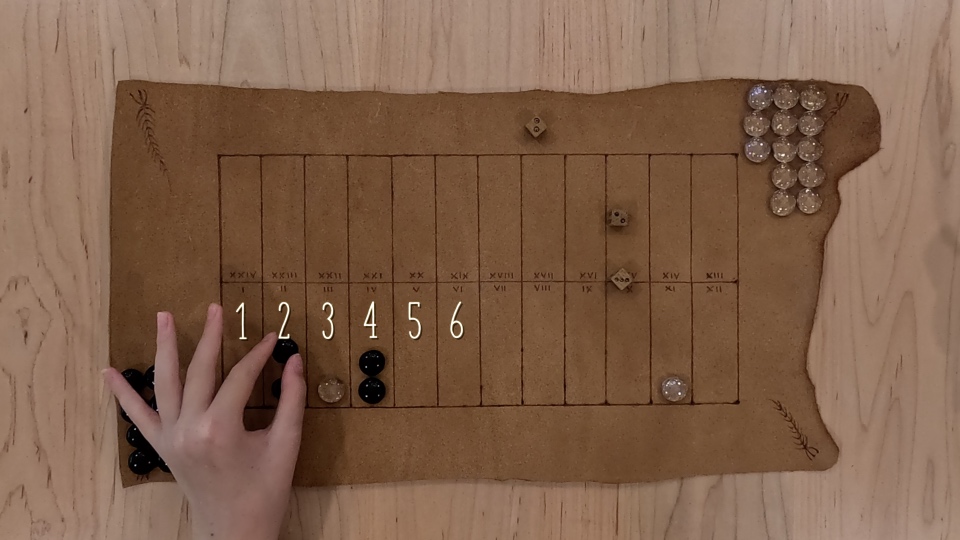
A player cannot move any pieces into the top half of the board (positions 13-24) until all of their pieces are on the board. If one of their pieces is knocked out of play, they can move pieces already in the top half, but no additional pieces can be moved into the top until all of their pieces are in play again.
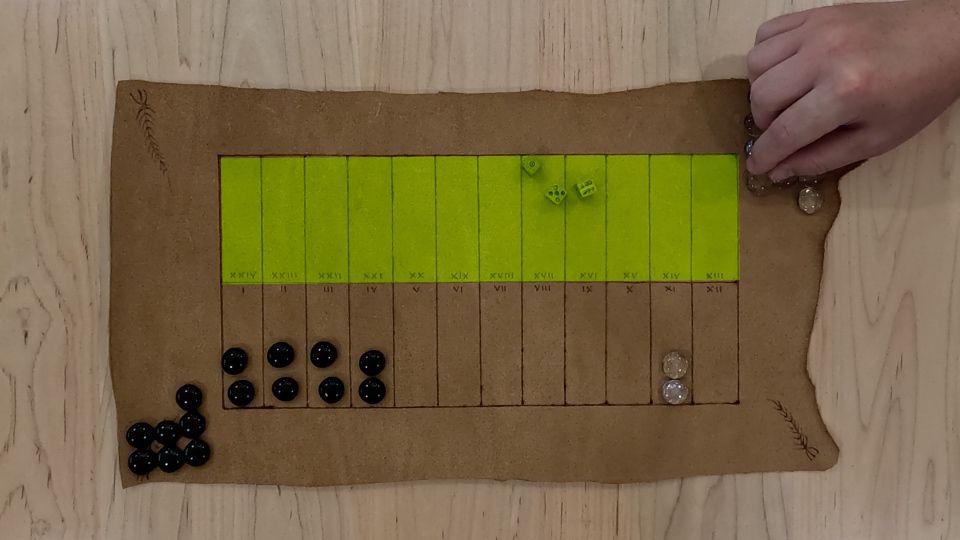
Exact rolls must be made to move pieces through position 24 and off the board. For example, a player must roll a 1 to move a piece in position 24 off the board. A player may not move pieces through position 24 and off the board unless all of their pieces are in the final quarter, positions 19-24. If one of their pieces is knocked out of play they must re-enter at position 1 and make their way back to the the last quarter before moving their pieces through position 24 and off the board.
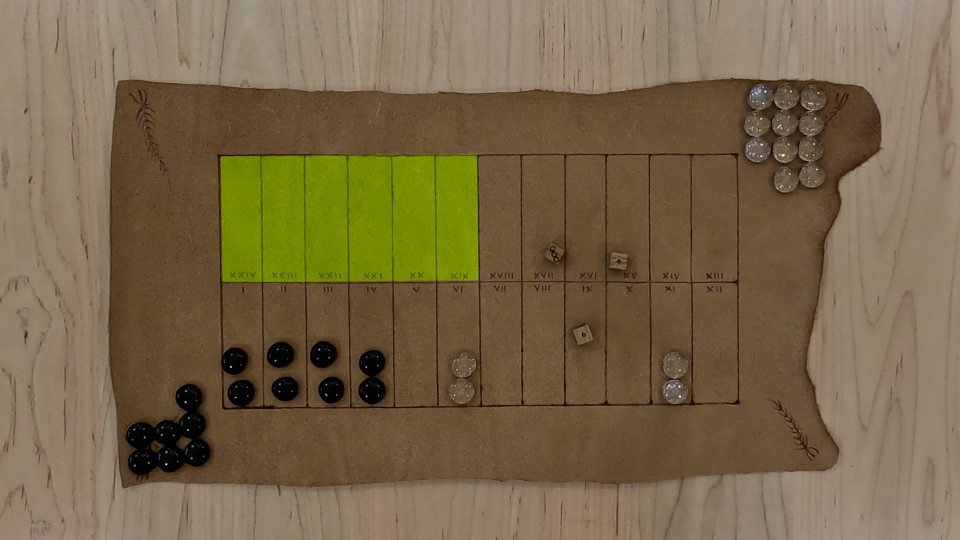
A basic strategy is to slow your opponent by securing as many of the first 6 positions as possible. This can hinder your opponent from bringing new pieces into play. There is a distinct advantage to bringing your pieces into play faster than your opponent.
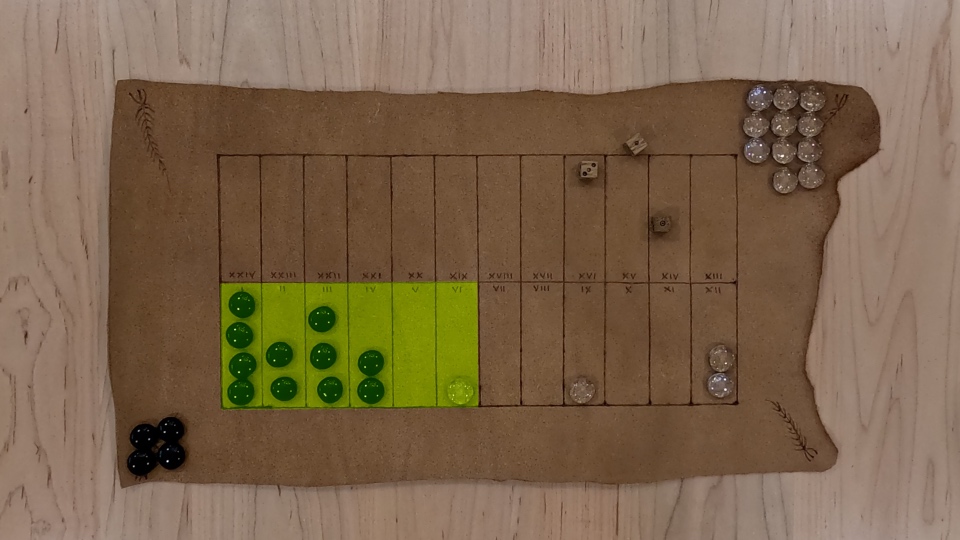
A similar late-game strategy is to secure positions 19-24 limiting your opponents ability to move pieces off the board. Movement tied to dice probability make positions 23 and 24 difficult spots to move off the board from.
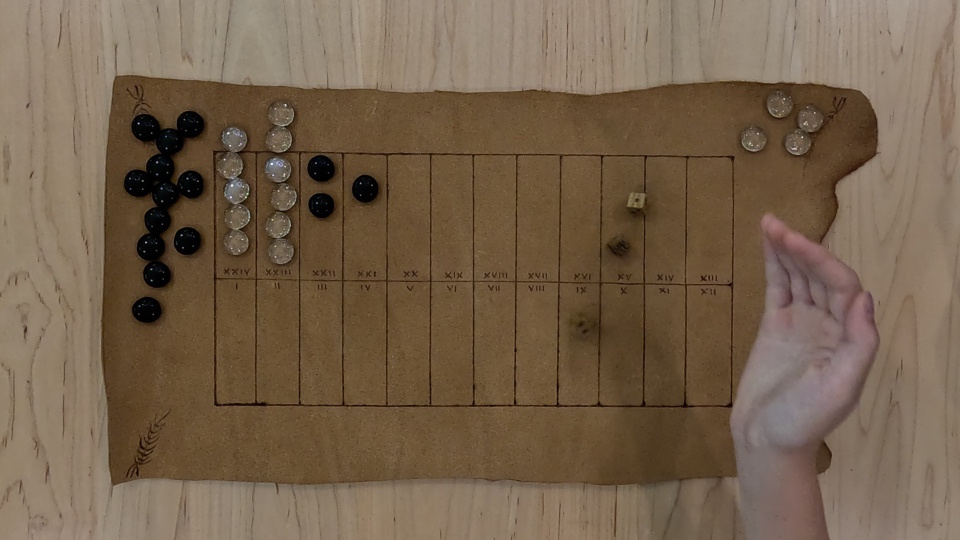
Purpose Circus Game Rating
Inclusivity: ★ ☆ ☆ ☆ ☆
Number of simultaneous players and learning curve for new players.
- Only two players limits group participation.
- Rules are simple and easy to learn.
Amusement: ★ ★ ★ ☆ ☆
Player engagement with game and others - collective laughter.
- Involving and fast-paced.
- Chance elements can dash well-executed strategies.
Quality: ★ ★ ★ ★ ☆
Play efficiency and game fit/finish.
- Simplicity is elegant.
- Hand-crafted components from historygames.it.
Replayability: ★ ★ ★ ☆ ☆
Gameplay variety, challenges and permutations of experience.
- Games are easy to string together one after another.
- Need the right situation and circumstance to take the game off the shelf.
Intangibles: ★ ★ ★ ☆ ☆
Innovation and nostalgia - the magic.
- 2000 years of history is hard to argue with.
- An appreciation of design and influence enhances the experience.
Overall: ★ ★ ★ ☆ ☆
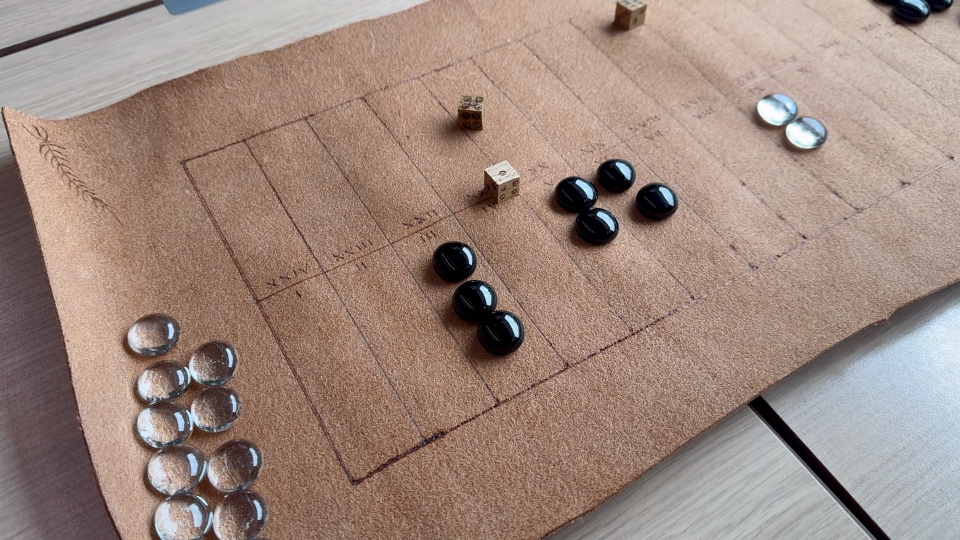
We ordered Tabula stateside and brougbt it with us on our recent trip to Italy. It was a good companion during our train ride from Rome to Naples, and while waiting out the rain in the mountains of Abruzzo. This gives our version some extra history and memories when we take it off the shelf to play. Give it a shot and make some memories of your own! if not for the human history aspect, then for the appreciation of sound gameplay.
Copyright © 2024 - 2025 Purpose Circus


